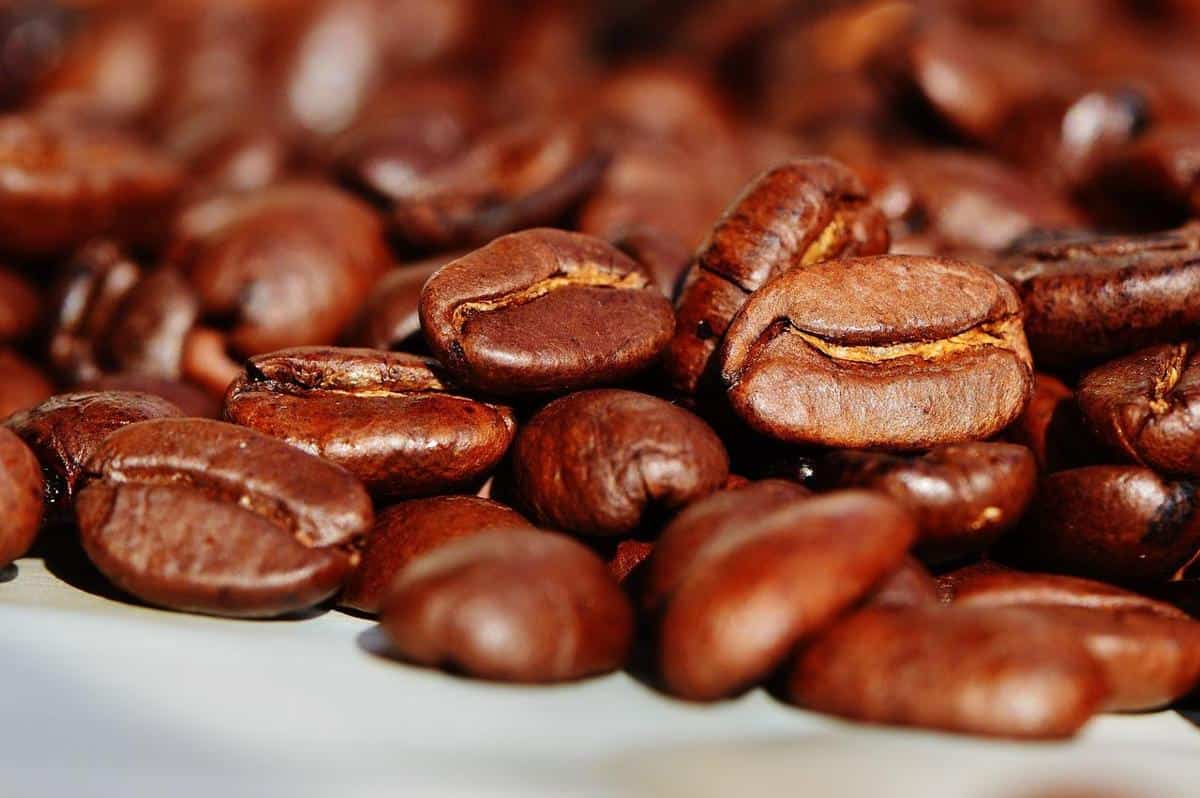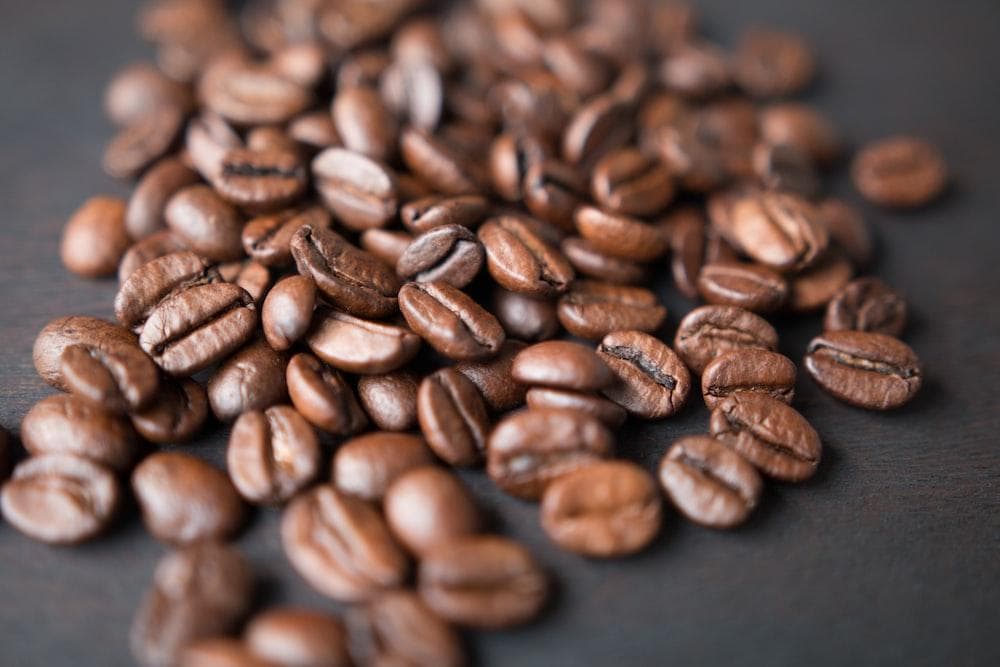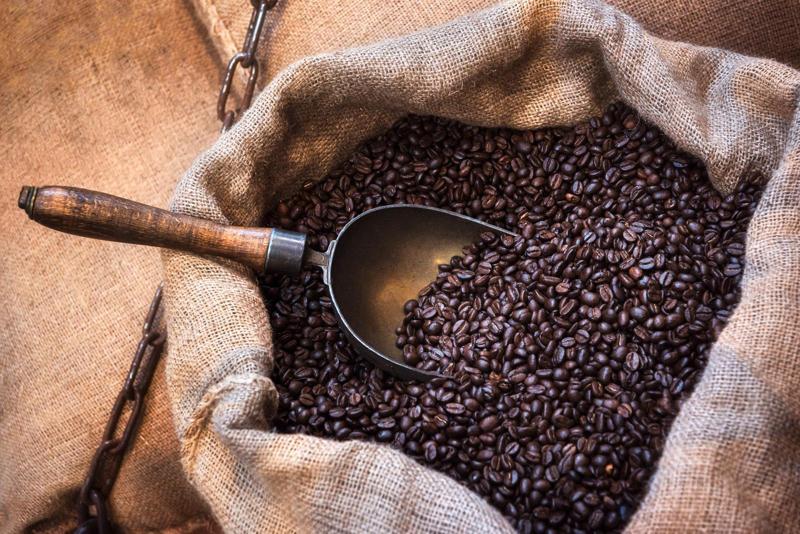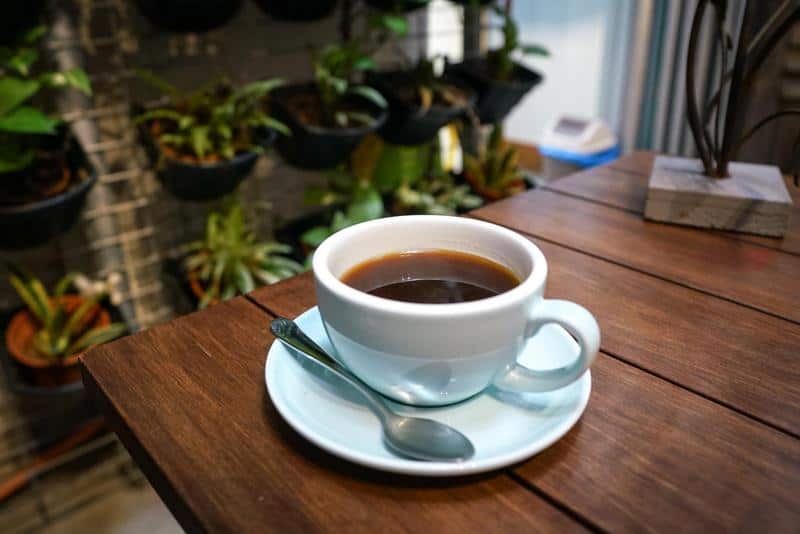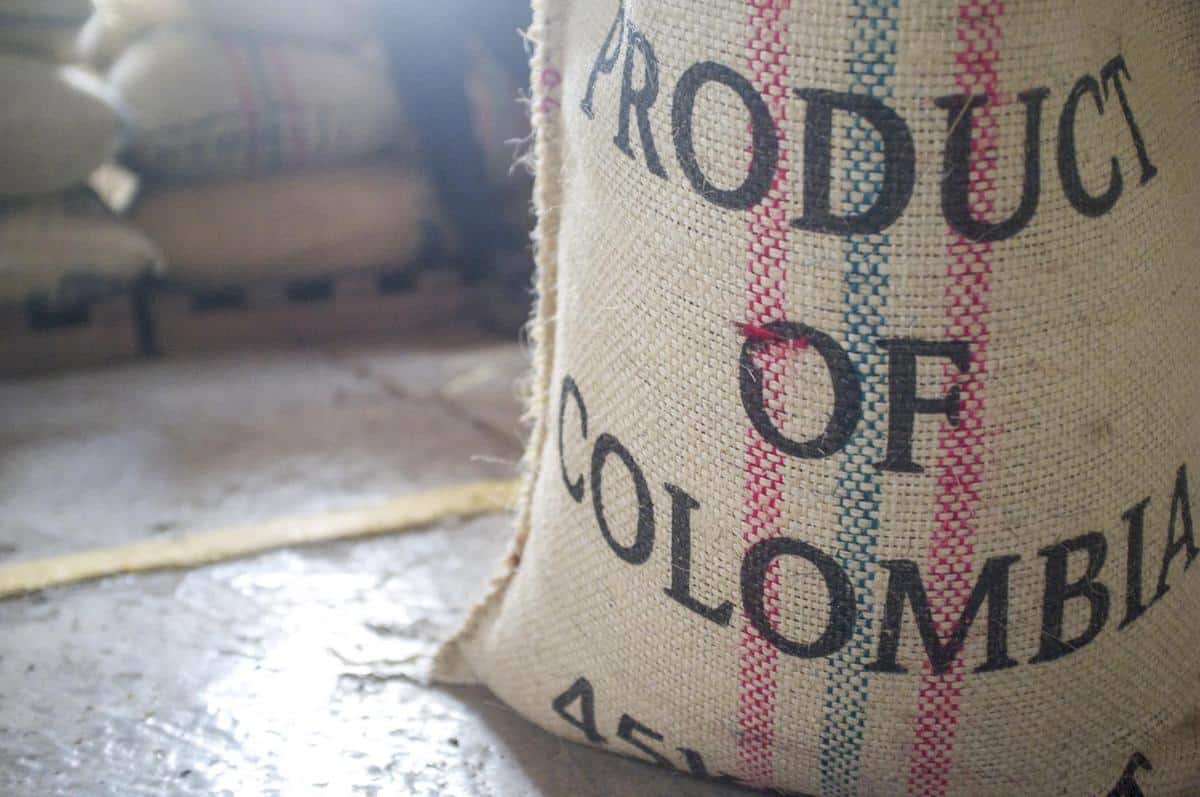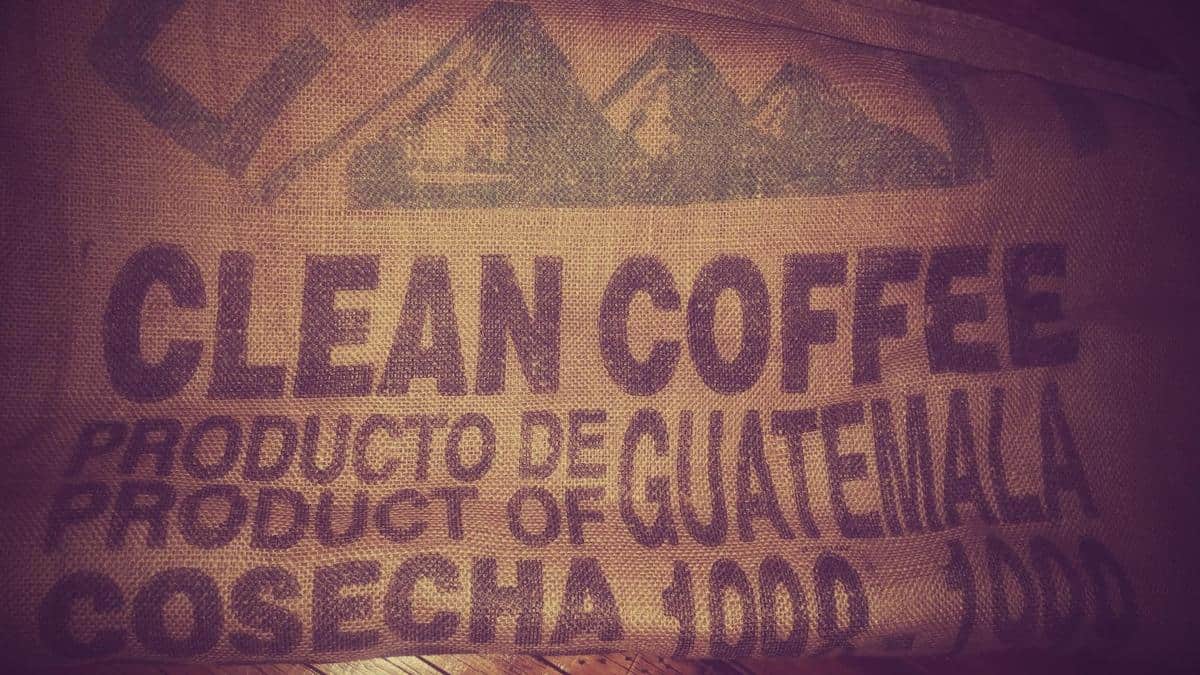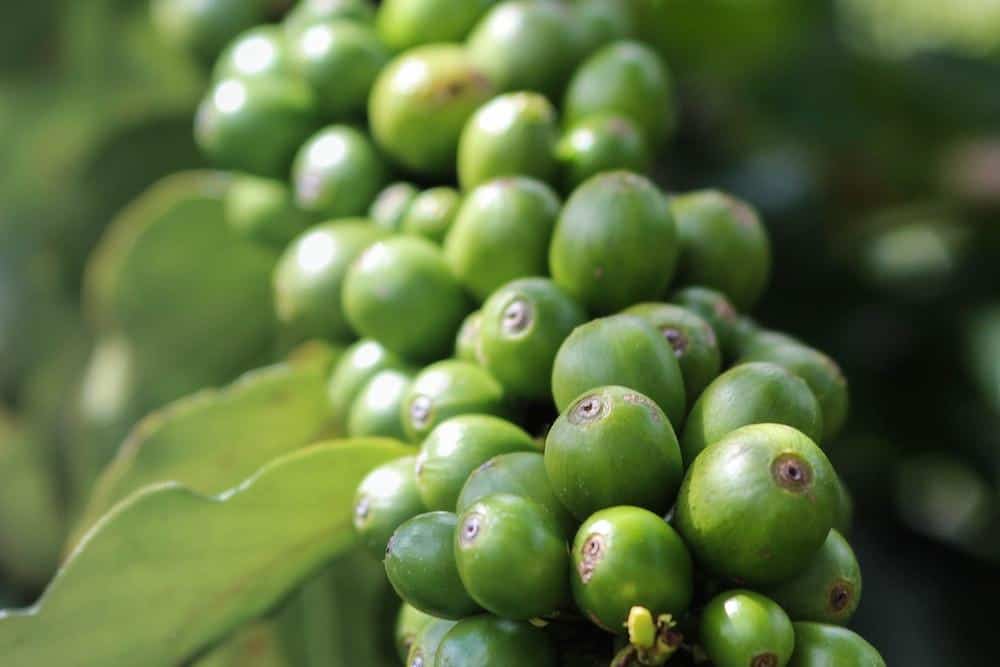Roasted coffee beans are the heart and soul of every cup of coffee enjoyed by connoisseurs around the world. These beans undergo a meticulous process of heating and transforming, enhancing their flavors and unlocking a symphony of savory aromas that tantalize the senses. Whether you’re a casual coffee drinker or a passionate aficionado, understanding the world of roasted coffee beans can take your appreciation for this beloved beverage to new heights.
In this article, we delve into the art and science behind roasted coffee beans, uncovering the secrets behind the perfect roast and exploring the various methods used to achieve it. We also examine the key differences between Arabica and Robusta beans, two popular varieties known for their unique characteristics when roasted.
The roasting process not only develops complex flavors but also awakens an array of intoxicating aromas that contribute to the overall sensory experience. We will explore how different roast levels produce distinct flavor profiles – from nutty and chocolatey to bright and citrusy – giving you insight into the incredible diversity found within roasted coffee.
Additionally, we debunk common misconceptions surrounding caffeine content in roasted coffee beans and provide practical tips on storing them to ensure freshness and extend their shelf life. Our expert guidance will help you brew a perfect cup every time, extracting optimal flavors from your favorite roasted beans.
Join us on this journey as we navigate through fascinating topics such as flavor profiles, brewing techniques, specialty roasters, and reviews of some of the finest roasted coffee bean offerings available. In doing so, we aim to elevate your coffee experience and deepen your appreciation for these rich and aromatic treasures. So grab your favorite mug, sit back, and prepare to embark on an exploration into the world of roasted coffee beans.
The Art of Roasting
The art of roasting coffee beans is a delicate and intricate process that requires skill, precision, and an understanding of the beans’ characteristics. During the roasting process, the raw green coffee beans are transformed into the rich and flavorful beans that coffee connoisseurs around the world savor. In this section, we will dive deep into the secrets behind achieving the perfect roast.
Roast Levels: From Light to Dark
One of the key aspects of roasting is determining the desired roast level. The roast level not only affects the flavor and aroma of the coffee but also influences its body and acidity. There are generally three main categories of roast levels: light, medium, and dark.
Light roast beans are roasted for a shorter duration at lower temperatures compared to their darker counterparts. This results in a light brown coloration and acidity that shines through, highlighting the unique flavors of the bean’s origin. Medium roast beans have a slightly darker hue with a balance between acidity and body, bringing out both subtle flavors and robustness.
On the other hand, dark roast beans are roasted for longer durations at higher temperatures, resulting in a dark brown appearance with oils on the surface. These beans have bold flavors with lower acidity but often contain bitter notes.
The Maillard Reaction: Unlocking Flavor Development
The secret behind achieving a perfectly roasted coffee bean lies in an important chemical reaction called the Maillard reaction. This reaction occurs when heat is applied to food during cooking or roasting processes and leads to browning and flavor development. In coffee roasting, it is during this reaction that various compounds within the bean break down to produce caramelization, sweetness, and complex flavors.
Understanding how temperature affects this reaction is crucial in achieving desired flavor profiles. For instance, lighter roasts require lower temperatures to allow certain flavors to shine through while darker roasts necessitate higher temperatures for bolder and more robust flavors. Roasters often closely monitor the temperature during the roasting process to ensure that the beans are roasted to their optimal level, allowing the flavors and aromas to develop fully.
Roasting Techniques: From Drum Roasting to Air Roasting
There are various techniques employed in the art of roasting coffee beans, each with its own unique advantages and characteristics. One commonly used method is drum roasting, where coffee beans are placed in a rotating drum as hot air circulates around them, evenly distributing heat. This technique allows for thorough and consistent roasting, resulting in well-developed flavors.
Another technique gaining popularity is air roasting, which involves suspending the coffee beans in a stream of hot air. This method allows for precise control over the roasting process and can produce lighter roast levels with brighter acidity.
Roasters often experiment with different techniques and adjust variables such as time, temperature, and airflow to achieve their desired roast profiles. It is this experimentation combined with masterful skill that unleashes the secrets behind the perfect roast, ultimately leading to an exceptional cup of coffee.
Roasting Methods
Roasting coffee is both an art and a science, and the method used can greatly impact the flavor and aroma of the final product. Over the years, different roasting methods have been developed and refined to bring out the best qualities in coffee beans. From traditional techniques that have stood the test of time to modern innovations that push the boundaries of flavor, there are various approaches to roasting coffee beans.
One of the oldest and most traditional methods of roasting is known as drum roasting. This process involves placing the coffee beans in a rotating drum over an open flame or electric heat source. The rotation ensures even heating and caramelization of sugars within the beans, resulting in a rich, full-bodied flavor profile. Drum roasting is often favored for its ability to produce consistent batches and develop complex flavors.
Another popular method is air roasting, which utilizes hot air to roast coffee beans. In this technique, a stream of heated air circulates around the beans, causing them to dry out and brown evenly. Air roasting tends to be faster than drum roasting, resulting in brighter acidity and more pronounced fruity notes in the final cup. This method is often preferred for its ability to highlight specific flavor characteristics of different coffee varieties.
In recent years, there has been a surge in popularity for various modern roasting techniques such as fluid bed roasting and infrared roasting. Fluid bed roasters suspend the coffee beans on a cushion of hot air, allowing for rapid heat transfer and precise control over roast development.
On the other hand, infrared roasters use infrared radiation to heat the beans directly, resulting in shorter roast times and enhanced caramelization. These modern methods offer unique advantages in terms of efficiency and flavor customization.
Regardless of the chosen method, it is important for coffee connoisseurs and specialty coffee shops to experiment with different techniques to find their preferred roast profile. Each method can bring out distinct flavors and aromas, from a classic well-rounded roast to a vibrant and fruity profile. The roasting method ultimately contributes to the complexity and character of the coffee, making it an essential part of the coffee journey.
| Roasting Method | Description |
|---|---|
| Drum Roasting | This traditional method involves rotating coffee beans over an open flame or electric heat source to ensure even heating and develop complex flavors. |
| Air Roasting | This method uses hot air to roast coffee beans, resulting in brighter acidity and pronounced fruity notes in the final cup. |
| Fluid Bed Roasting | Coffee beans are suspended on a cushion of hot air in fluid bed roasters, allowing for rapid heat transfer and precise control over roast development. |
| Infrared Roasting | Infrared radiation is used to heat the beans directly in infrared roasters, resulting in shorter roast times and enhanced caramelization. |
Arabica vs. Robusta
Roasted coffee beans come in various types, but two popular varieties that often take the spotlight are Arabica and Robusta. Understanding the key differences between these two types of roasted coffee beans can enhance your coffee drinking experience and help you choose the perfect cup to suit your taste preferences.
Arabica beans are known for their superior quality, making up roughly 60% of the world’s total coffee production. They are grown at high altitudes, typically above 2,000 feet, in regions with a temperate climate. These conditions produce a more delicate and complex flavor profile characterized by fruity and floral notes. Arabica beans also have lower acidity levels compared to other varieties, resulting in a smoother and less bitter taste.
On the other hand, Robusta beans are hardy plants that thrive in lower altitudes and warmer climates. They make up the remaining 40% of global coffee production. Robusta beans have a stronger and more robust flavor profile with earthy and nutty notes. These beans contain more caffeine than Arabica beans, making them a popular choice for those who prefer a stronger kick in their cup of joe.
Here is a breakdown of some key differences between Arabica and Robusta coffee:
- Taste: Arabica offers a more nuanced flavor with notes of fruitiness and flowers, while Robusta presents earthier flavors with hints of chocolate or nuts.
- Acidity: Arabica has lower acidity levels than Robusta, resulting in a smoother taste.
- Caffeine Content: Robusta contains around twice as much caffeine as Arabica, giving it an extra energy boost.
- Price: Arabica tends to be pricier due to its labor-intensive cultivation requirements and desirable flavor profile.
- Market Share: While Arabica dominates the specialty coffee market, Robusta is often used as an ingredient in blends or instant coffees.
Understanding these distinctions can help you discern which type of roasted coffee bean aligns better with your taste preferences. Whether you gravitate towards the bold and strong flavors of Robusta or prefer the delicate and complex notes of Arabica, exploring the world of different coffee varieties can expand your coffee connoisseur horizons.
The Science of Aromas
When it comes to coffee, one of the most captivating aspects is the aroma. The science behind these aromas is an intriguing aspect of roasted coffee beans. During the roasting process, a symphony of savory scents is unleashed, enhancing the overall coffee experience for connoisseurs.
The first step in understanding the science of aromas in roasted coffee beans is knowing that the process involves the Maillard reaction. This reaction occurs between amino acids and reducing sugars when exposed to heat. It is responsible for creating hundreds of different chemical compounds that contribute to the diverse range of flavors and aromas found in coffee.
To better understand this process, let’s delve into some key compounds and their associated smells. One example is 2-furfurylthiol, which gives off a roasted nut aroma often found in medium or dark roast coffees. On the other hand, 2-methylpyrazine creates a caramel-like scent commonly associated with light or blonde roasts. These are just a few examples of many chemical compounds that work together to create complex and enticing aromas in roasted coffee beans.
To fully appreciate these savory scents, it is important to pay attention to the timing and temperature during the roasting process. Different compounds are generated at different stages of roasting, resulting in various flavor profiles and aromas. For instance, lighter roasts tend to have more fruity or floral aromas, while darker roasts develop deeper, smoky notes. By carefully controlling variables such as time and temperature, skilled roasters can achieve desired flavors and optimize aromatic properties.
Exploring Flavor Profiles
When it comes to roasted coffee beans, one of the most fascinating aspects is the wide range of flavor profiles that can be found. From nutty and chocolatey to fruity and citrusy, each cup of coffee offers a unique taste experience. Understanding these flavor profiles can help coffee connoisseurs choose their preferred roast and enhance their overall enjoyment of the beverage.
Nutty Flavors
One popular flavor profile found in roasted coffee beans is nuttiness. This is often associated with medium to dark roasted coffees and can come in various forms such as almond, hazelnut, or pecan. These flavors are developed during the roasting process, where the natural sugars in the beans caramelize, resulting in a rich and toasted taste. Nutty flavors add depth and complexity to the coffee, providing a comforting and satisfying drinking experience.
Citrusy Notes
On the other end of the flavor spectrum, there are coffees that offer bright and citrusy notes. These flavors are commonly found in light to medium roasted coffees, which allow the delicate acidity and fruity undertones to shine through. Citrus notes can include hints of lemon, orange, grapefruit, or even tropical fruits like pineapple. They provide a zesty and refreshing quality to the coffee, making it an excellent choice for those who prefer a lighter and more vibrant cup.
Other Flavor Profiles
Beyond nutty and citrusy flavors, there is a whole world of diverse taste experiences waiting to be explored in roasted coffee beans. Some common flavor profiles include chocolatey or cocoa notes for those who enjoy a rich and indulgent cup of joe. There are also floral characteristics like jasmine or lavender that add a delicate and fragrant touch. Additionally, earthy flavors such as tobacco or spice can be found in some coffees, adding complexity and depth to the overall taste.
The Impact of Roasting on Caffeine Content
Understanding the Relationship between Roasting and Caffeine Content
When it comes to the impact of roasting on caffeine content, there are many misconceptions and misunderstandings. To debunk common myths and shed light on the truth, it is important to understand the relationship between roasting and caffeine content in coffee beans.
Contrary to popular belief, roasting does not increase or decrease the overall amount of caffeine in coffee beans. The caffeine content remains relatively stable throughout the roasting process. However, what changes during roasting is the density of the beans.
As coffee beans are roasted, they lose moisture and expand in size. This results in a decrease in weight but an increase in volume. Consequently, when measured by weight, lighter roasted beans may contain slightly more caffeine than darker roasted ones due to their higher density.
The Influence of Roast Level on Caffeine Extraction
Although the overall caffeine content remains unchanged during roasting, the extraction of caffeine during brewing can be influenced by roast level. Lighter roasted beans are typically denser and have less surface area exposed compared to dark roasted beans. As a result, lighter roast coffee may require a longer brewing time or finer grind size for optimal extraction.
It is worth noting that while darker roasted coffee may appear stronger in flavor and bolder in taste, this is mainly due to other compounds present in the bean that contribute to its overall profile. The perception of a stronger cup of coffee should not be solely attributed to increased caffeine content.
Identifying Your Preferred Caffeine Intake
Understanding how different roast levels affect caffeine extraction is essential for those who have specific preferences when it comes to their daily caffeine intake. If you prefer a milder cup with less caffeine, opt for lighter roasted coffee and consider adjusting your brewing parameters accordingly. On the other hand, if you desire a fuller-bodied cup with a higher caffeine concentration, dark roasted coffee may be more suitable for you.
Ultimately, it is important to remember that the impact of roasting on caffeine content is minimal compared to other factors such as bean origin, brewing method, and personal taste preferences. By exploring different roast levels and experimenting with brewing techniques, you can find the perfect balance that suits your individual coffee experience.
Roasted Coffee Beans
Temperature and Humidity: The Enemies of Freshness
One of the key factors in maintaining the freshness and flavor of roasted coffee beans is storage conditions. Temperature and humidity are the main enemies when it comes to preserving the quality of your beans. It is important to store your roasted coffee beans in a cool, dry place away from direct sunlight. Heat and moisture can cause the oils present in the beans to deteriorate, resulting in a loss of flavor and aroma.
Airtight Containers: Keeping Oxygen at Bay
Oxygen is another culprit that can accelerate the staling process of roasted coffee beans. When exposed to air, coffee beans interact with oxygen through a process called oxidation, which can lead to a loss of flavor and freshness.
Investing in airtight containers can help keep oxygen at bay and prolong the shelf life of your roasted coffee beans. Look for containers that have a one-way valve built into the lid, which allows carbon dioxide – naturally emitted by freshly roasted beans – to escape without letting oxygen in.
Freshness vs Freezing: The Debate
When it comes to extending the shelf life of your roasted coffee beans, some may suggest freezing as an option. While freezing can slow down the staling process, it is important to note that it does not completely stop it. Additionally, freezing can lead to moisture condensation when thawing, which could impact the quality of your beans.
If you do choose to freeze your roasted coffee beans, make sure they are stored in an airtight container or bag designed for freezer use. When ready to use them, allow them to come back up to room temperature before opening the container to avoid condensation.
By following these storage tips, you can ensure that your roasted coffee beans stay fresh for longer periods, allowing you to enjoy their savory aromas and flavors at their best potential every time you brew a cup. Remember, freshness is key in experiencing the full range of flavors and aromas that roasted coffee beans have to offer, so take care in storing them properly to maximize your coffee experience.
Brewing the Perfect Cup
When it comes to brewing the perfect cup of coffee, the quality and roast of the coffee beans play a crucial role in achieving optimal flavor. Here are some tips and techniques to help you unleash the full potential of your roasted coffee beans.
-
- Grind Size: The grind size of your coffee beans can greatly impact the flavor of your brew. For most brewing methods, a medium grind is recommended as it allows for a balanced extraction. However, different brewing methods may require different grind sizes. For example, espresso requires a fine grind, while French press calls for a coarse grind.
- Water Temperature: The temperature of the water used for brewing also affects the flavor extraction process. Optimal water temperature ranges between 195°F and 205°F (90°C to 96°C). Too hot or too cold water can result in over or under-extraction, leading to a less flavorful cup of coffee.
- Brewing Time: Time plays an important role in determining the strength and flavor of your brew. Each brewing method has its own recommended brewing time. For example, pour-over usually takes around 3-4 minutes, while espresso shots typically take around 25-30 seconds. It’s important to follow the specific instructions for your chosen brewing method to achieve the best results.
| Tip | Description |
|---|---|
| Grind Size | The size of your coffee bean grinds impacts flavor extraction. |
| Water Temperature | Optimal water temperature range for brewing. |
| Brewing Time | Recommended time for each type of brew. |
- Ratio of Coffee to Water: The ratio of coffee to water is another key factor in achieving the perfect cup. A general starting point is using 1 to 2 tablespoons (depending on your desired strength) of coffee for every 6 ounces of water. However, you can adjust this ratio based on personal preference.
- Clean Equipment: Keeping your brewing equipment clean is essential for maintaining the quality and flavor of your coffee. Residue from previous brews can affect the taste of your current cup. Regularly clean your coffee maker or other brewing equipment to prevent any unwanted flavors from transferring to your brew.
By following these tips and techniques, you can unlock the optimal flavor and aroma from your roasted coffee beans and create a truly satisfying cup of coffee. Experiment with different variables such as grind size, water temperature, and brewing time to find the perfect balance for your taste preferences. Remember, brewing coffee is both an art and a science, so don’t be afraid to explore and discover new flavors along the way.
Roasted Coffee Bean Reviews
Roasted coffee bean reviews play a crucial role in helping coffee connoisseurs discover the finest flavors and aromas. In a world with countless coffee brands and varieties, these reviews provide valuable insights and guidance for those seeking exceptional coffee experiences. By reading reviews from other enthusiasts, consumers can gain knowledge about different roasts, flavor profiles, and brewing techniques.
When it comes to reviewing roasted coffee beans, experts often assess several key aspects. One important factor is the origin of the beans, as different regions produce distinct flavors. For example, coffee beans grown in Ethiopia may offer fruity and floral notes, while beans from Brazil might have a more chocolatey or nutty taste. Reviewers also evaluate the roasting process itself, paying attention to factors such as roast level, consistency, and balance of flavors.
Flavor descriptions are another significant aspect of roasted coffee bean reviews. These descriptions give readers an idea of what to expect in terms of taste and aroma. Coffee experts often use a vocabulary that encompasses a wide range of flavors like caramel, citrus, earthy, chocolatey, or spicy. These detailed descriptions paint a picture of the sensory experience that consumers can anticipate when trying out different roasted coffee beans.
In addition to flavor profiles, reviews may include information on brewing suggestions and tips to maximize the enjoyment of the particular roasted beans. This guidance can help consumers extract the optimal flavor from their chosen product by providing recommendations for brew methods such as pour-over, French press, espresso machines, or automatic drip brewers. By following these suggestions from reviewers who have already experimented with various brewing techniques for specific beans, enthusiasts can enhance their overall coffee experience.
Roasted coffee bean reviews act as an invaluable resource for those seeking exceptional flavors and aromas in their cup of joe. They provide insights into origin specifics, flavor descriptions, and recommended brewing methods that enable consumers to make informed decisions based on personal preferences. By delving into these reviews before making a purchase, coffee connoisseurs can embark on a flavorful journey that matches their taste preferences and amplifies their overall enjoyment of roasted coffee.
The Growing Trend of Specialty Roasters
The coffee industry has seen a significant rise in the trend of specialty roasters in recent years. These specialty roasters are dedicated to offering unique and exquisite coffee offerings that cater to the discerning tastes of coffee connoisseurs. This section will delve into the growing trend of specialty roasters and the reasons behind their popularity.
Specialty roasters are known for their commitment to sourcing high-quality coffee beans from specific regions or farms around the world. They prioritize direct trade relationships and ensure that farmers receive fair compensation for their produce. By working closely with farmers, specialty roasters have the ability to influence and improve farming practices, leading to better quality beans.
One of the key factors driving the popularity of specialty roasters is their emphasis on showcasing the distinct characteristics and flavors of different coffee origins. These roasters often engage in small-batch roasting, carefully tailoring each roast profile to bring out the unique qualities of the beans. Coffee enthusiasts are drawn to this attention to detail and appreciate being able to explore a wide range of flavors from different regions.
To further enhance their offerings, specialty roasters also experiment with different processing methods such as natural, washed, and honey processed. These methods can greatly impact the flavor profile of a coffee bean, adding layers of complexity to its taste. Additionally, some specialty roasters may age their beans or use unconventional techniques like barrel aging or flavor infusion, creating truly innovative and distinctive brews.
With an increasing demand for unique and high-quality coffees, it is no surprise that specialty roasters have gained a strong foothold in the market. Their commitment to excellence and constant innovation has captured the attention of coffee lovers worldwide. Whether it is rare single-origin beans or creative blends, these specialty offerings provide an elevated coffee experience that appeals to those seeking something beyond ordinary cup of joe.
| Key Features | Benefits |
|---|---|
| Direct trade relationships with farmers | Fair compensation for farmers and improved farming practices |
| Small-batch roasting | Showcasing unique flavors and characteristics of coffee origins |
| Experimentation with different processing methods | Added complexity and innovative flavor profiles |
| Focus on unique and high-quality coffees | Elevated coffee experience for enthusiasts |
Conclusion
In conclusion, roasted coffee beans truly have the power to elevate your coffee experience with their rich and aromatic qualities. The art of roasting coffee beans is a delicately balanced process that unveils the secrets behind the perfect roast. From traditional methods to modern techniques, there are a variety of ways to achieve the desired flavor profiles in your cup of joe.
Understanding the key differences between Arabica and Robusta can further enhance your appreciation for roasted coffee beans. Each variety brings its own unique characteristics and flavors to the table, allowing you to explore the diverse world of coffee.
The science of aromas in roasted coffee beans is truly fascinating. The roasting process unleashes a symphony of savory scents that can range from nutty to citrusy and everything in between. These aromas not only contribute to the overall taste experience but also provide a sensory journey that delights coffee connoisseurs.
When it comes to brewing the perfect cup, utilizing high-quality roasted coffee beans is essential. By following storage tips to maintain freshness and extend shelf life, you can ensure that each brew is bursting with flavor. Finally, exploring specialty roasters who offer unique and exquisite coffee offerings allows you to discover new flavors and expand your horizons as a coffee lover.
Frequently Asked Questions
Are roasted coffee beans good?
Roasted coffee beans are highly regarded for their rich flavor, enticing aroma, and the invigorating beverage they produce. The roasting process brings out the complex flavors and characteristics hidden within the raw coffee beans, resulting in a more enjoyable drinking experience for many coffee enthusiasts.
The roasting process also imparts a deep brown color to the beans, making them visually appealing as well.
What is the difference between roasted coffee beans and coffee beans?
The main difference between roasted coffee beans and coffee beans lies in their appearance and taste. Coffee beans in their natural state are greenish, hard, and have a grassy flavor. On the other hand, roasted coffee beans undergo a transformation due to the application of heat during the roasting process.
This results in various degrees of roasting such as light, medium, or dark roast that bring out different flavors from the coffee beans. So while coffee beans are raw and unprocessed before roasting, roasted coffee beans are ready to be ground and brewed.
What does roasted coffee beans mean?
Roasted coffee beans refer to the stage at which green coffee beans have undergone heat treatment to unlock their full potential in terms of aroma and flavor. During roasting, the raw coffee beans are subjected to controlled levels of heat for a specific duration with precise monitoring techniques.
This alters the chemical composition of the bean’s cellular structure as well as its water content and oil distribution. As a result, roasted coffee beans exhibit greater solubility when brewed and develop distinct flavors unique to each roast level.
How long after coffee beans are roasted?
The time interval after which coffee beans should be used following roasting largely depends on personal preference and factors such as storage conditions and packaging methods employed post-roasting. Generally speaking, freshly roasted coffee is considered best when consumed within two weeks after being roasted as it maintains its optimum flavor profile during this period.
Beyond this timeframe, the volatile compounds responsible for desirable aromas start to degrade, resulting in a less vibrant cup of joe.
What are the disadvantages of coffee roasting?
While there are numerous benefits to coffee roasting, there are a few disadvantages worth mentioning. Firstly, roasting coffee beans requires careful attention to time and temperature, as improper roasting can lead to a loss of desired flavors or even burnt beans. Additionally, the roasting process causes the beans to release carbon dioxide, which must be allowed to degas properly to avoid off-flavors in the brewed coffee.
Furthermore, coffee roasting involves exposure to high temperatures and potentially harmful smoke and fumes if not done in a well-ventilated environment. Lastly, the cost associated with specialty-grade coffee beans and equipment required for home-roasting can be a disadvantage for those seeking budget-friendly options.

